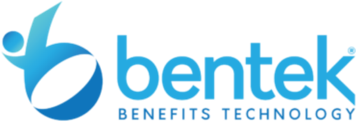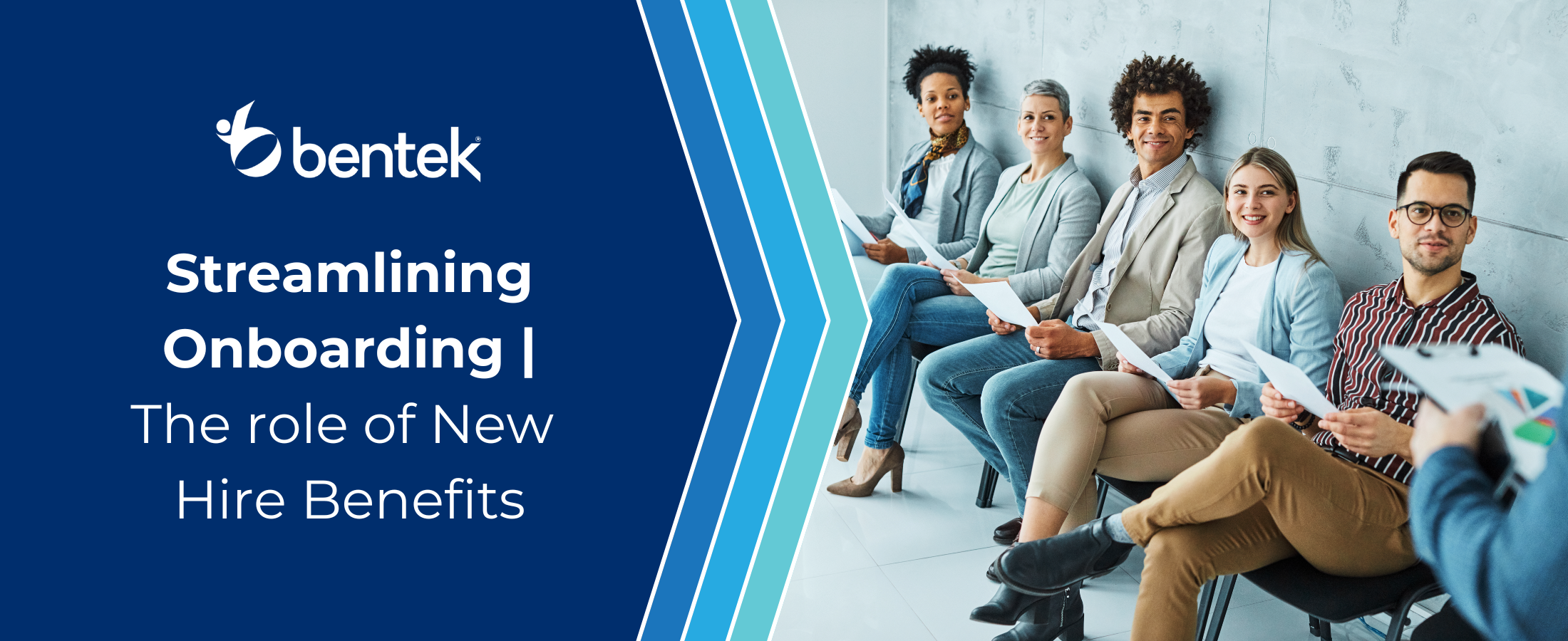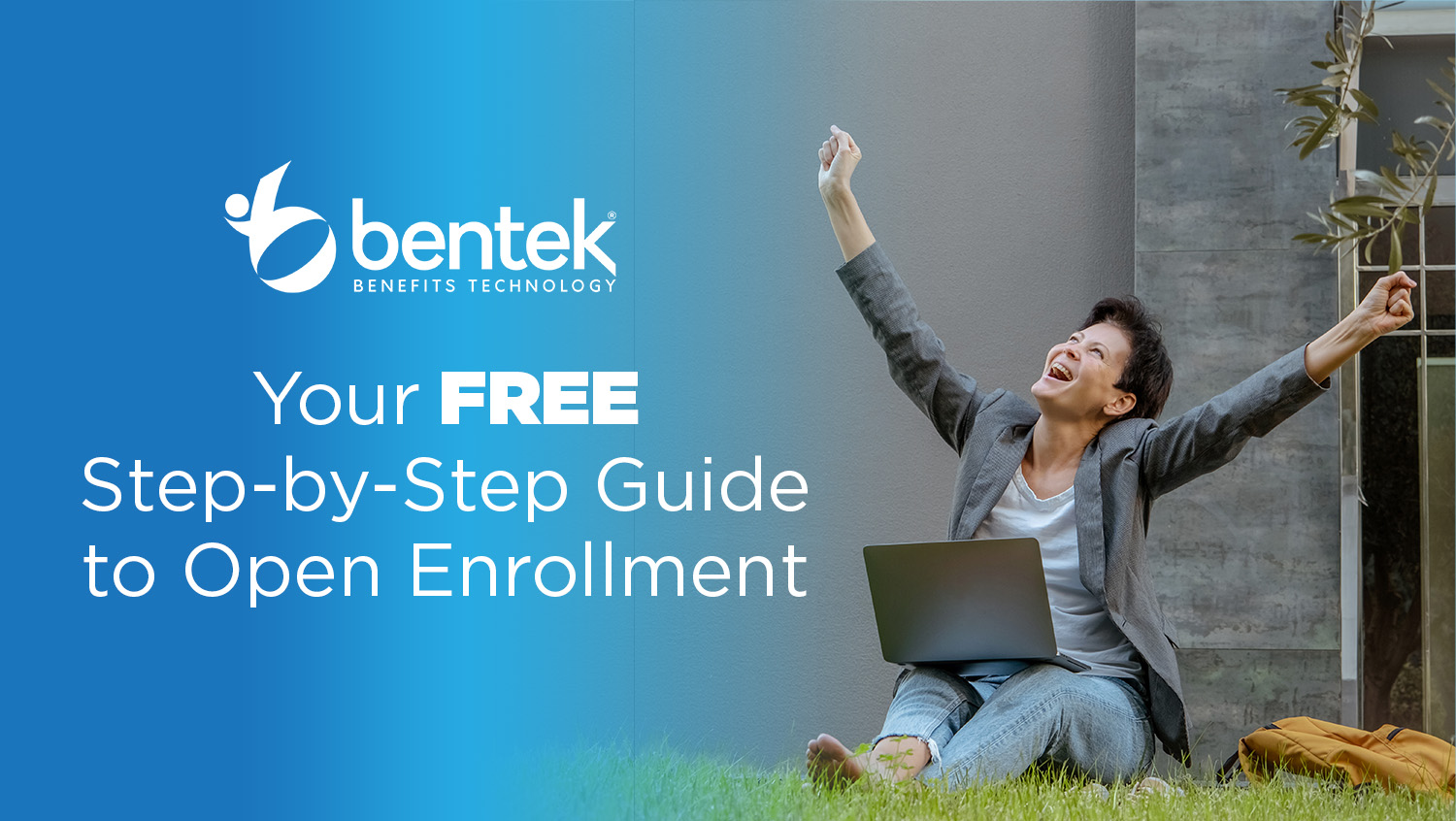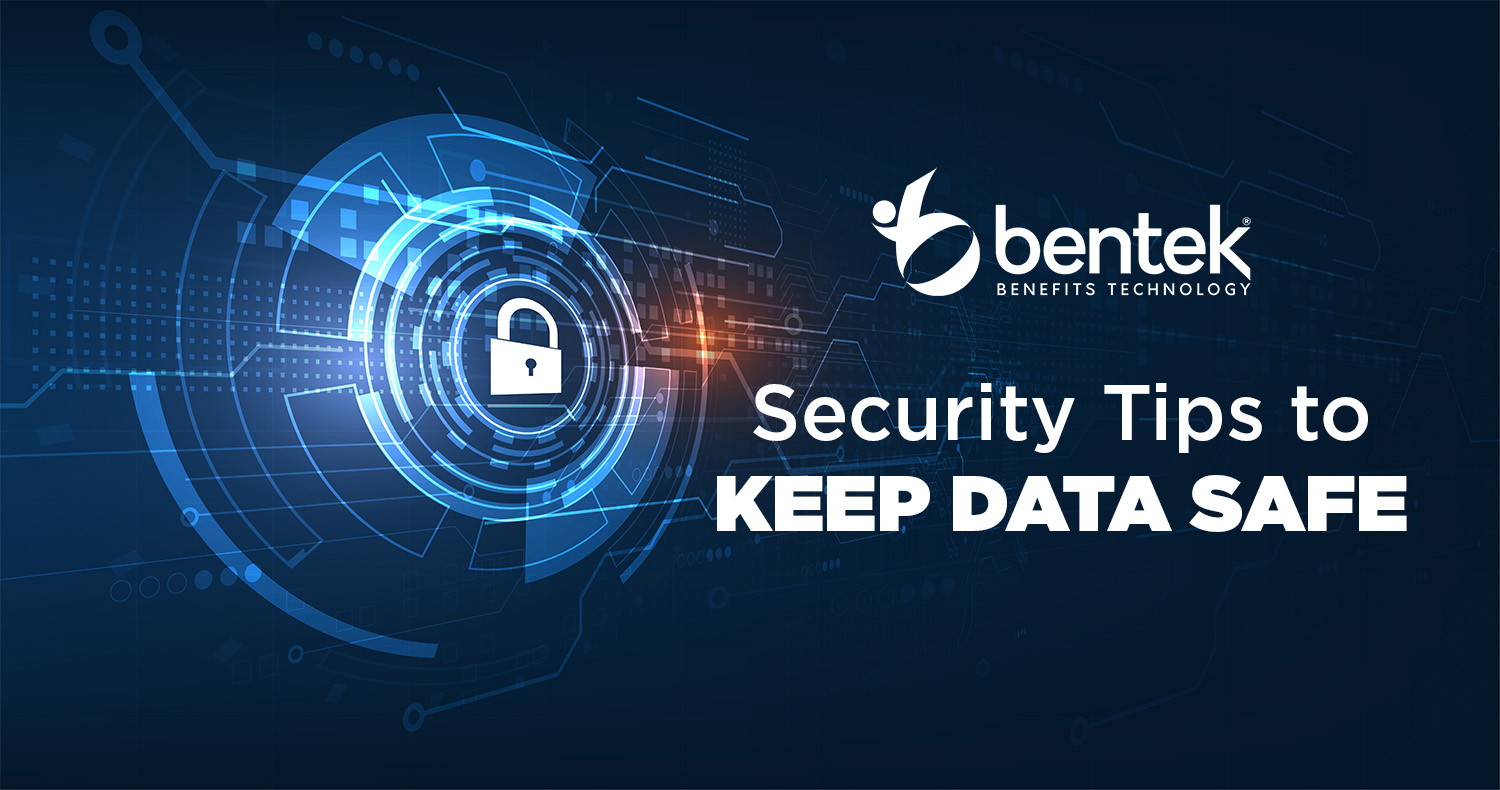Many organizations struggle with onboarding. According to Gallup, only 12% of employees think their companies have done a great job bringing them on board. And given the complexity of public sector organizations, new hire onboarding faces its own set of hurdles. Government and education employers face unique challenges regarding benefits onboarding that the private sector doesn’t encounter. From navigating complex benefits to ensuring compliance with regulatory standards, the process demands precision and care.
In this article, we’ll explore the critical role of benefits onboarding, a cornerstone of the employee induction process that significantly impacts job satisfaction and fosters long-term loyalty. As we delve into the importance of streamlining onboarding in the public sector, we aim to offer insights into improving efficiency, reducing errors, and boosting new hire ben engagement from the outset.
Are you ready to transform your onboarding process and set your new employees up for success?
Understanding Benefits Onboarding in the Public Sector
The onboarding of new hires in the public sector poses distinctive challenges that require meticulous attention and strategic approaches. Unlike their counterparts in the private sector, public organizations must navigate a labyrinth of complex benefits, adhere to stringent regulatory standards, and ensure a positive initial experience for new employees. This process, daunting as it may seem, underscores the importance of effective benefits education during onboarding.
Benefits onboarding emerges as a pivotal component of the employee induction process within this context, but sadly BambooHR found that 35% of HR leaders say they struggle to create an onboarding experience that helps employees feel engaged to their new roles quickly. New hire onboarding serves not just as a procedural necessity but as a strategic tool to enhance job satisfaction and nurture a sense of loyalty among the workforce. By comprehensively understanding their benefits package, new hires gain a sense of security and belonging, crucial factors in their long-term retention and engagement.
Moreover, the significance of streamlining the onboarding process in the public sector cannot be overstated. A streamlined approach not only improves operational efficiency but also minimizes the likelihood of errors that could mar the onboarding experience. Most importantly, it acts as a lever to boost new hire engagement from their first interaction with the organization. In a sector where the competition for talent is fierce and the stakes for employee satisfaction are high, optimizing the onboarding process becomes an imperative.
From leveraging digital onboarding tools to simplifying complex procedures, the goal is clear: to set new hires on the path to success and engagement from day one.
The Importance of Benefits Onboarding in the Public Sector
Within the public sector, the onboarding process holds a critical position in shaping the initial experience of new hires. This section delves into the multifaceted nature of benefits onboarding, illustrating its impact on employee engagement, job satisfaction, and organizational efficiency.
Complexity and Variety of Benefits Packages
Public sector organizations offer a myriad of benefits, including retirement plans, health insurance, and various employee perks. Unfortunately, 45% of employees do not fully understand their benefits package, leading to under-utilization according to MetLife. Each of these benefits carries its own set of complexities and options, making effective benefits onboarding not just beneficial but crucial. For instance:
- Retirement Plans: Navigating through pension plans versus 401(k) options often requires detailed explanations.
- Health Insurance: Choices between different health plans, including HMOs, PPOs, and HSAs, demand clear communication.
- Employee Perks: Understanding the full scope of available perks, such as wellness programs and tuition reimbursement, enhances the overall value proposition for new hires.
Direct Correlation with Employee Engagement
Effective benefits onboarding directly influences employee engagement and retention. Data supports a clear link between a well-executed onboarding process and improved job satisfaction among public sector employees. For example:
- According to SHRM, employees who report a thorough onboarding process are 69% more likely to stay with an organization for up to three years.
- A study by the Brandon Hall Group found that a strong onboarding process improved new hire retention by 82%.
- In a research report from Unum, they stated that 82% of employees who rated their benefits education highly also rated the employer an excellent or very good place to work
Psychological Impact of Benefits Awareness
Understanding their benefits package can significantly reduce stress for new hires, fostering a sense of security and belonging. This psychological comfort translates into a more engaged and productive workforce. Key points include:
- Security: Knowing health and retirement needs are met gives employees peace of mind, allowing them to focus on their roles.
- Belonging: Awareness of perks and wellness programs fosters a sense of inclusion and care from the organization.
Challenges of Remote Onboarding
The shift towards remote work has underscored the importance of digital tools in conveying benefits information effectively. Remote onboarding presents unique challenges, such as:
- Engagement: Maintaining the attention and engagement of new hires through screens.
- Clarification: Providing a clear understanding of benefits without the benefit of face-to-face explanations.
Cost Implications of Inefficient Benefits Onboarding
Inefficient benefits onboarding not only undermines employee engagement but also incurs significant costs due to administrative overheads and potential turnover with 80% of new hires planning to quit if they receive poor onboarding. Considerations include:
- Administrative Overheads: Manual processes and errors in benefits administration can lead to unnecessary costs.
- Turnover: A lack of clear benefits understanding can contribute to higher turnover rates, incurring recruitment and training expenses.
In summary, the onboarding process in the public sector, particularly regarding benefits education, is a critical determinant of new hire satisfaction and long-term organizational efficiency. Through addressing the complexity of benefits packages, acknowledging the psychological impact on new employees, and leveraging digital tools for remote onboarding, public sector organizations can significantly enhance the onboarding experience. This strategic approach not only optimizes operational efficiency but also solidifies the foundation for a loyal and engaged workforce.
Key Challenges in Public Sector Benefits Onboarding
The public sector faces unique obstacles in the benefits onboarding process, from regulatory adherence to personalizing benefits for a diverse workforce. These challenges require astute strategies and innovative solutions to ensure a smooth and compliant onboarding experience for new hires.
Regulatory Landscape: ACA and FMLA Compliance
Navigating the complexities of regulations such as the Affordable Care Act (ACA) and the Family Medical Leave Act (FMLA) presents a significant challenge for public sector organizations. Compliance is paramount, yet it must balance with meeting the varied needs of employees.
- ACA Compliance: Ensures that health benefits meet minimum value standards and affordability criteria.
- FMLA Requirements: Managing leave entitlements without infringing on employee rights demands meticulous record-keeping and policy clarity.
Failure to comply can result in severe penalties, making it essential for public sector HR departments to stay informed and agile in their policy implementations.
Personalizing Benefits for a Diverse Workforce
The diversity of the public sector workforce, with its range of ages, life stages, and health requirements, complicates the personalization of benefits information.
- Varied Eligibility and Needs: According to Marsh McLennan, 70% of employees want customizable benefits, and this trend continues to rise as more employees prioritize personalization. Tailoring information to suit individual employee needs while ensuring understanding and accessibility for all.
- Workforce Statistics: Reflecting on data showing substantial diversity in public sector roles can help tailor benefits communication effectively.
This diversity necessitates a flexible approach to benefits onboarding, one that accommodates the unique circumstances of each new hire.
Addressing Information Overload
In Aflac’s 2022 Workforce report, they found that 66% of public sector workers find understanding insurance or benefits needs stressful. New hires often face a barrage of information, making it challenging to grasp the nuances of their benefits packages.
- Simplification and Clarity: Breaking down information into digestible segments can help alleviate the overwhelm.
- Accessible Language: Avoiding jargon and using clear, straightforward language makes benefits information more approachable.
Strategies to mitigate information overload include structured information sessions and providing resources for independent learning.
Technological Hurdles in Digital Onboarding
According to Mercer, 69% of HR professionals are planning to increase their investment in digital platforms to improve benefits administration and communication. The implementation of onboarding solutions introduces its own set of challenges, particularly regarding data security and system integration.
- Data Security: Protecting sensitive employee information within digital onboarding platforms is a top priority.
- System Integration: Ensuring new digital tools work seamlessly with existing HR systems to avoid data silos and inefficiencies.
Overcoming these hurdles often involves significant investment in secure, flexible software solutions that can integrate with a range of HR systems.
The public sector’s approach to benefits onboarding must navigate a labyrinth of regulatory requirements, adapt to a diverse workforce, simplify complex information, and overcome technological barriers. Each of these challenges demands attention and innovation to ensure that the onboarding process not only complies with legal standards but also meets the needs of new hires, setting the stage for their long-term engagement and satisfaction.
Best Practices for Streamlining Benefits Onboarding
Optimizing the onboarding process for public sector employees involves a blend of strategy, technology, and personalized communication. This approach not only aims to streamline administrative tasks but also enhances the overall new hire experience, ensuring employees feel valued and informed from day one.
Automating Benefits Enrollment for New Hires
In a report from Mercer, they found that 46% of organizations are automating their benefits administration processes, with an additional 26% planning to do so within the next two to three years. Automating the benefits enrollment process stands out as a pivotal strategy for reducing manual errors and administrative workload. By leveraging automation, organizations can achieve:
- Accuracy and Efficiency: Minimization of human error ensures accurate benefits enrollment, leading to a smoother onboarding experience.
- Reduced Administrative Burden: Automation significantly cuts down the time HR staff spend on manual data entry and follow-ups, allowing them to focus on more strategic initiatives.
Efficiency gains from automation are well-documented, with organizations observing substantial reductions in processing times and improvements in data integrity.
Emphasizing Early, Ongoing, and Clear Communication
The importance of early and ongoing communication about benefits cannot be overstated. According to MetLife, 83% of employees say that benefits communication needs to be clearer and more engaging for them to make informed decisions. Effective communication strategies include:
- Pre-boarding Engagement: Introducing benefits information even before the first day can help new hires feel prepared and valued.
- Regular Updates: Keeping employees informed about any changes to their benefits or additional opportunities encourages engagement and satisfaction.
- Easy to Understand: The language we use to talk about benefits can be confusing Keep your communication simple and free of industry jargon so everyone can comprehend the message.
Research supports that early engagement in the benefits onboarding process leads to higher success rates, with employees feeling more connected and supported by their employer.
Developing Centralized Onboarding Portals
Centralized onboarding portals offer a one-stop solution for new hires to access all necessary information and resources. The benefits of such platforms include:
- Ease of Access: Employees can find all their onboarding materials, including benefits information, in one place.
- Self-Service Capabilities: New hires can complete forms, sign documents, and enroll in benefits at their own pace, reducing the pressure and confusion often associated with the first days on the job.
Employees with access to digital benefit management tools for onboarding report 82% higher satisfaction with their healthcare plans, according to Marsh McLennan. Centralized onboarding portals significantly enhance the new hire experience by simplifying access to information and resources, thereby fostering a positive start to their journey with the organization.
Incorporating AI and Machine Learning for Personalization
The integration of AI and machine learning into the onboarding process promises to revolutionize benefits education by offering:
- Tailored Information: AI can analyze a new hire’s specific situation and preferences, providing personalized benefits recommendations.
- Interactive Learning: Machine learning algorithms can create dynamic learning modules that adapt based on the employee’s engagement, increasing comprehension and satisfaction.
Personalized onboarding journeys, facilitated by AI and machine learning, improve employees’ understanding and appreciation of their benefits package, leading to higher satisfaction and engagement levels.
By adopting these best practices, public sector organizations can overcome the inherent challenges of benefits onboarding, transforming it into an opportunity to engage and retain their workforce effectively. Automating enrollment, prioritizing communication, leveraging technology for centralized information access, and personalizing the experience with AI are not just strategies but essential components of a modern, effective onboarding process.
Looking to the Future: Trends in Public Sector Onboarding
The landscape of public sector onboarding is witnessing transformative trends, driven by digital innovation and evolving employee expectations. These developments are not just reshaping the initial engagement experience for new hires but also setting the stage for long-term success and retention. Let’s delve into the significant shifts marking this evolution.
Personalized Benefits Packages
The move towards personalized benefits packages in the public sector signifies a departure from one-size-fits-all solutions. Digital platforms are at the forefront of this transition, offering:
- Customization at Scale: Leveraging technology to tailor benefits packages to individual needs and preferences.
- Data-Driven Insights: Utilizing analytics to understand employee behaviors and preferences, thereby crafting more relevant benefits offerings.
- Enhanced Employee Satisfaction: Studies indicate that personalized benefits significantly boost job satisfaction, as employees feel their unique needs are recognized and met.
This trend underscores the importance of flexibility and customization in benefits design, facilitated by digital advancements that allow for a more personalized approach.
Mental Health and Wellness Benefits for New Hires
The emphasis on mental health and wellness benefits underscores a holistic approach to employee well-being. Key developments include:
- Expanded Offerings: Incorporation of comprehensive mental health support, stress management programs, and wellness initiatives.
- Strategic Importance: Recognizing mental health benefits as critical for attracting and retaining talent, especially in high-stress public sector roles.
- Impact on Onboarding Success: Effective communication and early introduction of wellness programs during onboarding have shown to improve long-term employee engagement and retention.
By prioritizing mental health and wellness, public sector organizations can address the growing concern for work-life balance and employee well-being, further enhancing the appeal of public service roles.
Interactive and Gamified Onboarding Experiences
Interactive and gamified onboarding experiences are redefining how new hires learn about their benefits and the organization. These innovative approaches:
- Engage Employees: Transforming benefits education from a passive activity into an interactive experience.
- Increase Retention: Gamified learning has been shown to improve information retention, making it easier for employees to understand and appreciate their benefits.
- Foster a Positive Onboarding Experience: By making learning fun and engaging, organizations can create a welcoming and memorable first impression.
The adoption of gamification and interactive elements in onboarding processes reflects a broader trend towards engaging, experiential learning models in the workplace.
Continuous Onboarding and Regular Check-Ins
The concept of continuous onboarding emphasizes the importance of ongoing engagement and support beyond the initial hiring phase. This approach includes:
- Regular Updates on Benefits: Keeping employees informed about changes or additions to their benefits package.
- Continuous Learning Opportunities: Offering ongoing training and development resources to support career growth.
- Enhanced Employee Retention: Data suggests that a strategy of regular engagement and continuous professional development contributes to higher retention rates.
Continuous onboarding represents a shift towards a more dynamic, long-term engagement strategy, recognizing that employee needs and organizational priorities evolve over time.
These trends in public sector onboarding reflect a broader shift towards more personalized, engaging, and supportive workplace practices. By embracing these developments, public sector organizations can enhance their attractiveness as employers, improve the onboarding experience, and foster a more satisfied and committed workforce.
For more articles like this, check out the Bentek Blog!



